Welcome back to the Disney+ marathon!
Disney+ has slowly been adding more content since the initial UK launch in March. In fact, during the process of creating this blog, I found more films were being added to the 1940’s decade. I find the service to be improving over the period of time it has been released. I am still hoping Disney+ will upload more documentaries and behind the scenes material but only time will tell if this remains locked to DVD releases.
The 1940s was a turbulent time for the Walt Disney company enduring a rollercoaster of financial success and failures. Most of this can be linked to the Second World War which called for movie productions to be halted and a rapid decrease in distribution across the world. As a result, this era sees a large assortment of anthology films (movies pieced together with various segments). There are also some new discoveries along the way including movies from the film company RKO.
Let us commence the new era where I offer my own irrelevant opinions and hopefully offer some new history along the way.
Donald’s Dog Laundry 1940
We welcome in the 1940s with a new Donald Duck film. The animation has reached a happy standard compared to the 1930’s films.
The story is simplistic yet efficient Donald attempts to use his new machine desgined for automated dog washing. Despite trying to entice Pluto he has no luck getting the dog into the machine. Eventually, Donald finds himself in the machine.
The film is great to watch because of the dynamic between Pluto and Donald. Trying to get an animal into a tub can be a laborious task so it feels relatable. There is a good mixture of gags and humour.
Mr Duck Steps Out 1940
This is the first film on Disney+ to introduce Donald’s girlfriend Daisy. For the most part, Daisy’s animation/ design has remained the same over the years, but her voice is certainly different in this version. The tone is ridiculous when compared to her recent incarnations, Daisy sounding almost identical to Donald. I personally think it was wise of the studio to change the voice acting.
The story reloves around Donald going to Daisy’s house for a date. Unfortunately, his nephews decide to crash the party. Overall, the film is forgettable but I loved the clean 1940s jibe dance theme to this short.
Mouse takes a trip 1940
Finally, Mickey does not have demon eyes! His character design has been changed in this film. His dark eyes really was a pet peeve of mine mainly because the other characters had normal eyes and Mickey was not unified to their design. The film itself is also enjoyable; Mickey tries to sneak his dog, Pluto, onto the train, but the mean train conductor Pete is determined to make sure he cannot keep the dog aboard.
Tugboat Mickey 1940
The trio, (Mickey, Donald and Goofy), are working together on a tugboat when they receive a distress call for a sinking ship. Whilst the film is fun to watch it utilises many similar gags from previous Mickey films.
Swiss Family Robinson 1940
This film was not actually produced or made by the Walt Disney company, instead, this film was produced by RKO. This might be the reason some people do not recognise it from the list of Dinsey releases of the 1940s. In fact, many may never have seen this film before. Until Disney+ the film was rather hard to find and had not been given a DVD release.
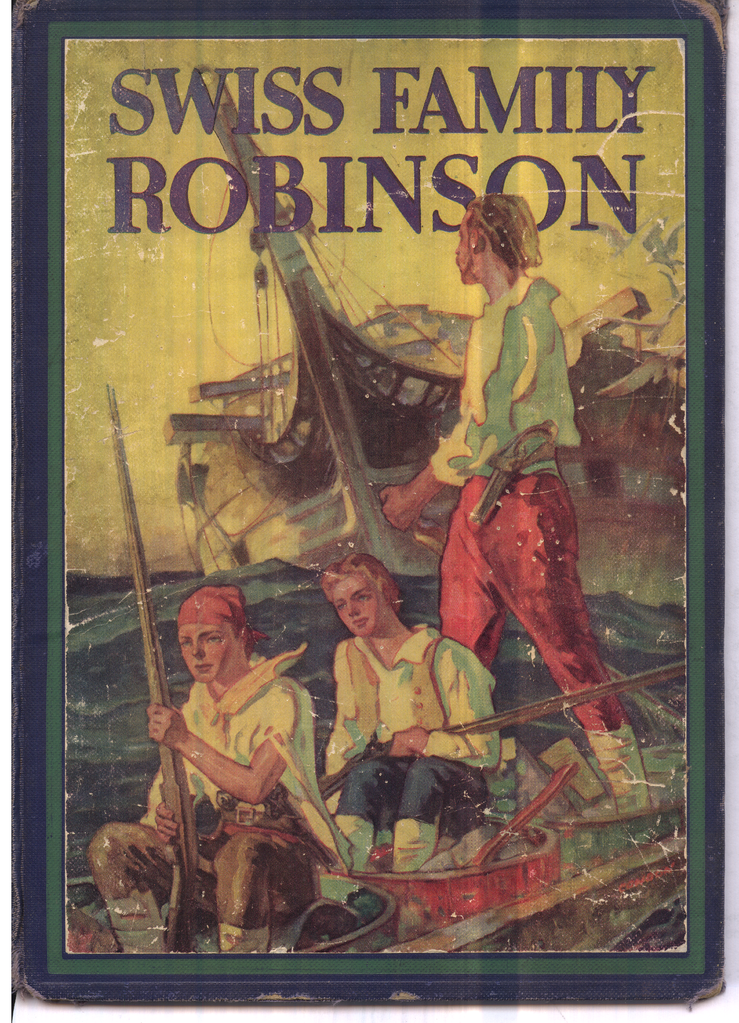
RKO was an American film production and distribution company. It was one of the biggest studios in Hollywood’s Golden Age of Cinema. Some of RKO’s most famous films include King Kong, Top Hat, and Citizen Cane. Walt Disney’s relationship with RKO began in 1935 when they entered a distribution deal. All features from the Mickey shorts to Snow White and the Seven Dwarfs film were distributed by RKO.
Have you ever noticed how the RKO logo used to appear before films like Alice in Wonderland? That is because RKO was distributing all Dinsey features up until 1957 when the company was dissolved. Walt Disney brought the rights to RKO’s version of Swiss Family Robinson during the production of the 1960 Disney adaptation of the same name. It is said Walt Disney did this to avoid the film’s potential re-release where comparisons could be made by critics and audiences.

The film is in black and white giving the film an artistic edge over the 1960’s version. The introduction of the film spends a great deal of time in London, setting up the premise, of course, much of this is due to the style films were made in the 40s. Older films tend to spend long screen time focusing on things like letters and showing stills of books. Everyone in the Robinson family is extremely English, to illustrate their aristocratic life in London; before they must set sail to the colonies following a decision made by William Robinson.
Overall, I was not a huge fan of this rendition of the movie but there were some great cinematic scenes considering the time it was made. For example, the impressive menagerie of animals including ostriches and giant turtles. However, it is questionable to witness particular scenes where animals look perplexed. E.g. horses and cows all tied up in ropes dragged across tumultuous waters. The audio is not perfect which again is due to its age and how it was recorded. Nevertheless, the sets manage to create the awe and wonder from the book of the same name.
It is interesting to see this version and compare it to the well known 1960s Disney version. The narrative in this version focuses solely on the family adjusting to life on the island emitting the pirates. I am glad to have seen this film but I doubt I will ever watch it again. I really struggled with how selfish the father/ husband, (William Robinson), is portrayed. After the family’s home is destroyed by a storm he chooses to focus on the destruction of the boat. He refuses to adhere to the needs of his family and will not build the boat to escape. Even after his son is nearly killed by spider bite William refuses to leave the island. I much prefer the Disney narrative in which the family actually enjoy life on the island and are not dictated their choices by one reckless man.
Pinocchio 1940
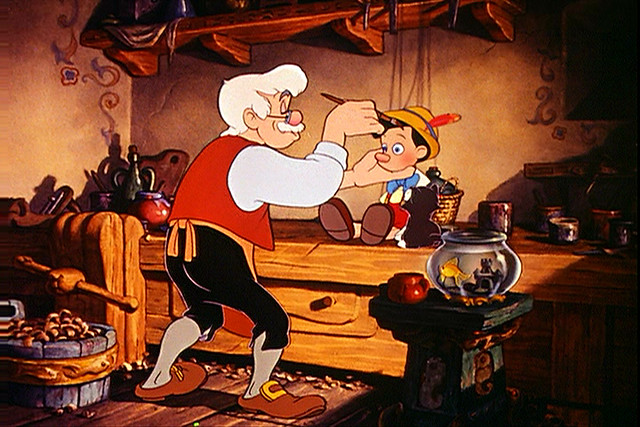
This is the second animated feature film to be released by Disney. Following the success of Snow White, production on a new animated movie began. One might find this a strange choice to follow in the shoes of Snow White given some of the dark narrative choices in the movie. This is because in truth, Bambi was planned to be the next film but animation of the animals held up production.
Nevertheless, Pinnochio holds some Disney-centric themes such as dreams coming true. The song “when you wish upon a star” won two Academy Awards for the best musical score and went on to become the iconic music used in the opening sequences of films. Unfortunately, the iconic ‘when you wish upon a star’ was not enough to impress critics of the time. As a result, Pinocchio performed low and geared mixed reviews often being compared to Snow White. American audiences were expecting more dwarfs and similar formula to the first animated feature. Whilst a majority of the European market was lost as World War 2 was raging. It was only after the films second release in 1945, that it made a profit for the studio.
Pinocchio is a great film due to the morality of the tale teaching us to brave, truthful, and unselfish. The opening of the film is so pure and happy in the Gepetto’s workshop but things take a dark turn pretty quickly in the film. The episodic nature of the film draws the audience into a tumultuous adventure and you feel tense for the characters. Indeed, Pinocchio delves into some horrifying scenes. The most terrifying scene in the movie is Lampquick’s transformation from a terrified young boy into a donkey.
Yet, the character retains a pure child quality that is not seen in modern characters. Pinocchio certainly sounds American, the way he uses outdated terms like gee or Jiminy. My favourite characters are actually Figaro and Cleo (sidenote please go and watch the short called Figaro and Cleo). Despite there limited screen time, they are the epitome of cute. Jimminy Cricket is the perfect sidekick and offers comedic relief when necessary, although he looks nothing like any cricket or bug I have ever seen.
The animation is so gorgeous, from the sweeping streets of Italy to highly action-packed scenes of the sea. Most notably is the water animation at the end of the film, from the frothing of the waves to the way Monstroe the whale crashes through the seas and how it erupts around it. Some clear cultural differences from today’s audience are the use of tobacco and alcohol that are being consumed by young boys. However, this does come with a set of consequences so can be overlooked.
Let’s talk about my favourite thing, villains! In this film, there is no lack of villains. In order of appearance, Honest John, Stromboli, The Coachman and finally The Blue Whale. This is lending to the episodic nature of the Pinocchio stories the film is based on. What makes the villains in this film scarier then most Dinsey films is the strong similarities to villains one might encounter in the real world. Honest John is a shyster, willing to con the unsuspecting, Stromboli is a cruel businessman etc. I am not sure why Honest John is a fox, whilst the other villains are mainly human but it works nonetheless.
Fantasia 1940
I must confess this is one of my least favourite Disney films. I appreciate the concept behind Fantasia, i.e making a new form of entertainment a concert film, but it just drags out that little bit too long. Fantasia feels like it belongs in the documentary category more than a feature Disney film. Nevertheless, the idea of capturing younger audiences attention to classical music.
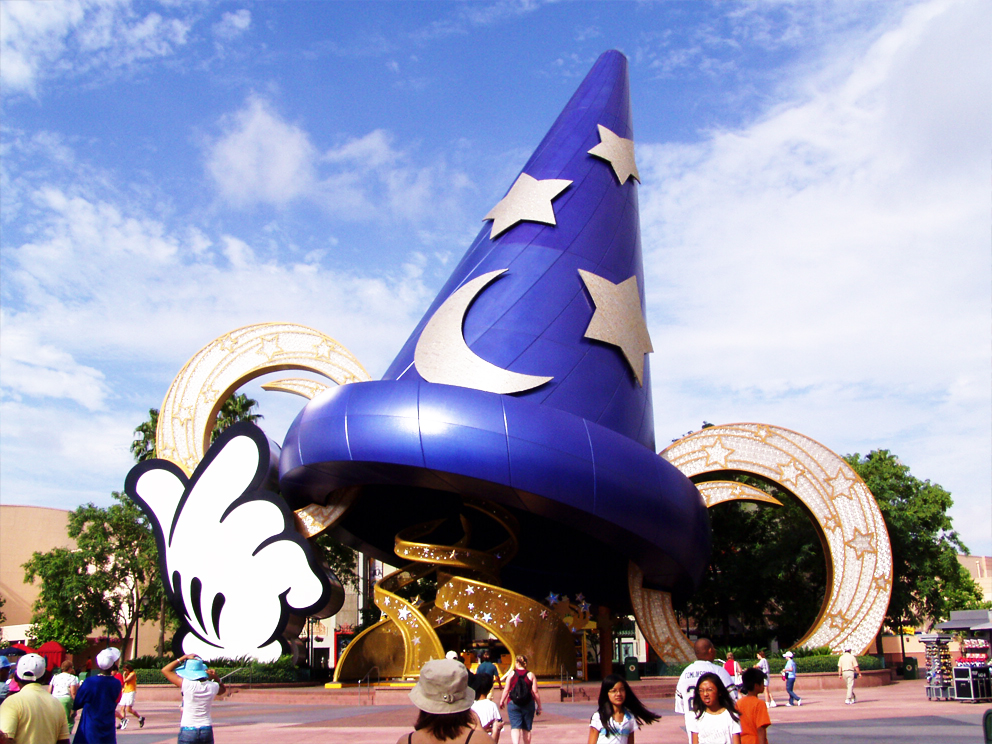
Fantasia is a concert of classical music and animation and falls into the category of pure art. The film was built around the segment The Sorcerer’s Apprentice, a project created to boost Mickey Mouse’s popularity which was in steady decline. Due to production costs soaring the idea to piece together different animated segments to make one large film was made. The Concert Feature was later developed with the focus shifted to classical music with Stokowski at the helm.
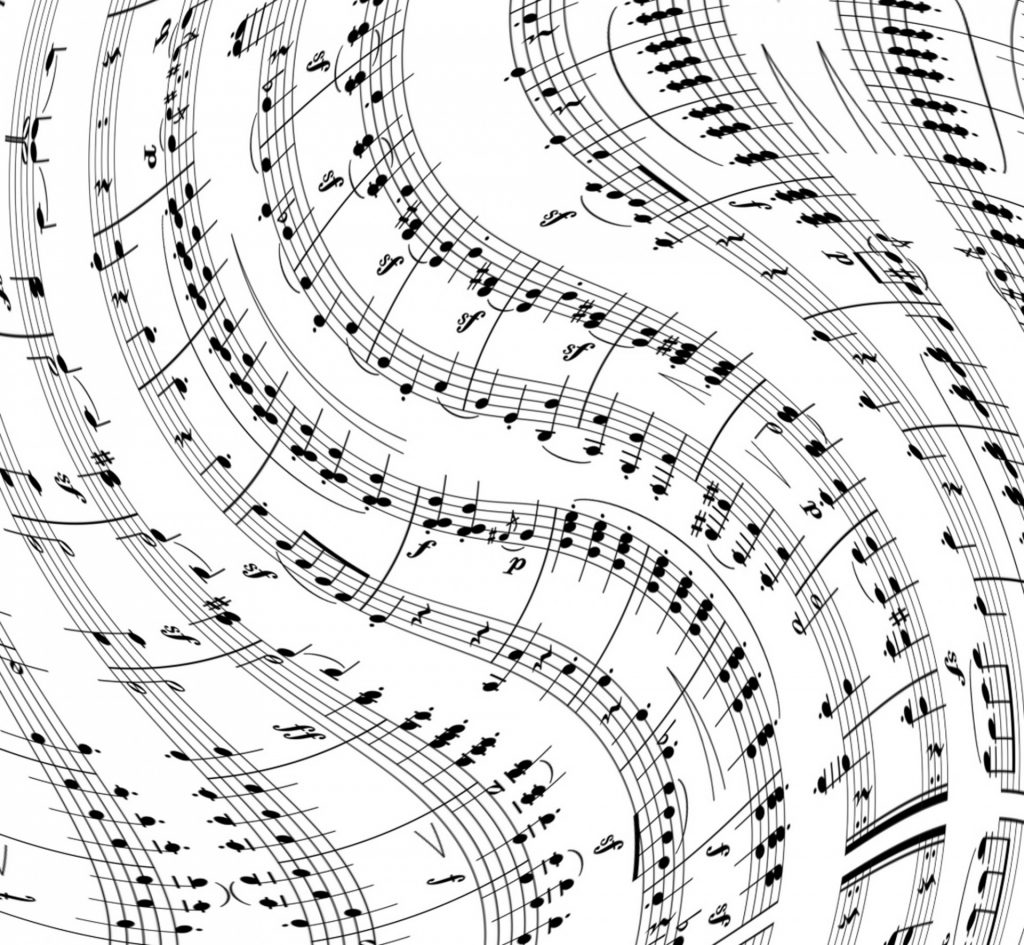
Bach is the first piece of music used in to introduce the film. The conductor and musicians play their instruments and the animation works around it looking rather abstract. Following bach is The Nutcracker Suite by Tchaikovsky. This is one of the more playful of the segments and is fun to watch. I like particularly like the animation of the fairies in this one and the vibrant colours use in this film and the water being placed on the spider webs. I also like the ice fairy animation and how they glide and step on ice which works as a prelude to the animation uses in Frozen.
The segment everyone wants to see in the film or perhaps remembers most it The Sorcerer’s Apprentice. The segment is stunning and works more like feature films that proceeded Fantasia. Mickey magics the broom to life to do his chores only to find he is in over his ears when the magic spell takes a turn for the worst.
After this The Sorcerer’s Apprentice, the film becomes a chore to watch. Furthermore, the interval seems unnecessary, I am unsure why it remained in the home release. The Pastoral Symphony was the longest part of the film which could do with cutting down. Despite this segment’s typical Disney cutesy vibe, and the mythological /fantasy elements it gets boring quickly. Thankfully, the studio has made the wise decision to remove the black centaurs who worked as a maid’s for the white centaurs. Thankfully, the ballet with hippos breathes a little bit of life back into this film. Side note: The animals in this segment are reused in other Disney films and productions such as Robin Hood and Who Framed Roger Rabbit.
Let’s end this film on my favourite topic. We end the film with Night on Bald Mountain, this villain is representative of a demon who hosts powers of the forces of evil; he can be likened to Satan. As such he arguably takes the crown as the most powerful and evil villain in the Disney lineup. Sidenote: one of the creatures from the grave look like the horned king. He is frightened back into hell by the dawn of the day and the soothing music of Ave Maria. The film then abruptly ends with no credits or closing words from the conductor.
The film geared generally positive reviews from critics at the time calling it a masterpiece. The negative press was mainly for the classical music community. Despite its critical claim, it failed at the box office due to the second world war.
Early to bed 1941
Another great Donald movie. I love this particular Donald films because I can relate to the irritable state he gets into when trying to go to sleep. I am something of a light sleeper and when I cannot get my shut eye, I become a Donald Duck. I think I would actually smash the alarm clock if it acted the same as the one in this film. My favourite line is, “I will get sleep if it kills me”.
Goofy in The Art of Skiing 1941
This is the first Goofy film on Disney+. In this film Goofy demonstrates the art of skiing through a series of gags and adventures. The film is narrated instead of opting for any spoken dialogue from Goofy, this style of storytelling seems outdated but that is how most Goofy films worked . The humour is pretty much the driving force of all Goofy films, it relies on showing how dumb Goofy can be e.g. he puts his ski’s on before his trousers, he is extremely clumsy, and of course he’s iconic scream.
Canine Caddy 1941
We end the first part of the 1940’s binge with the first Pluto film on Disney+.
Once again, Mickey’s design has been updated following his debut into feature films with Fantasia. The story begins with Pluto caddying for Mickey as he plays Golf. It is all going well until Mickey’s ball falls in a gopher hole and Pluto becomes fixated on catching gophers living inside the ground.

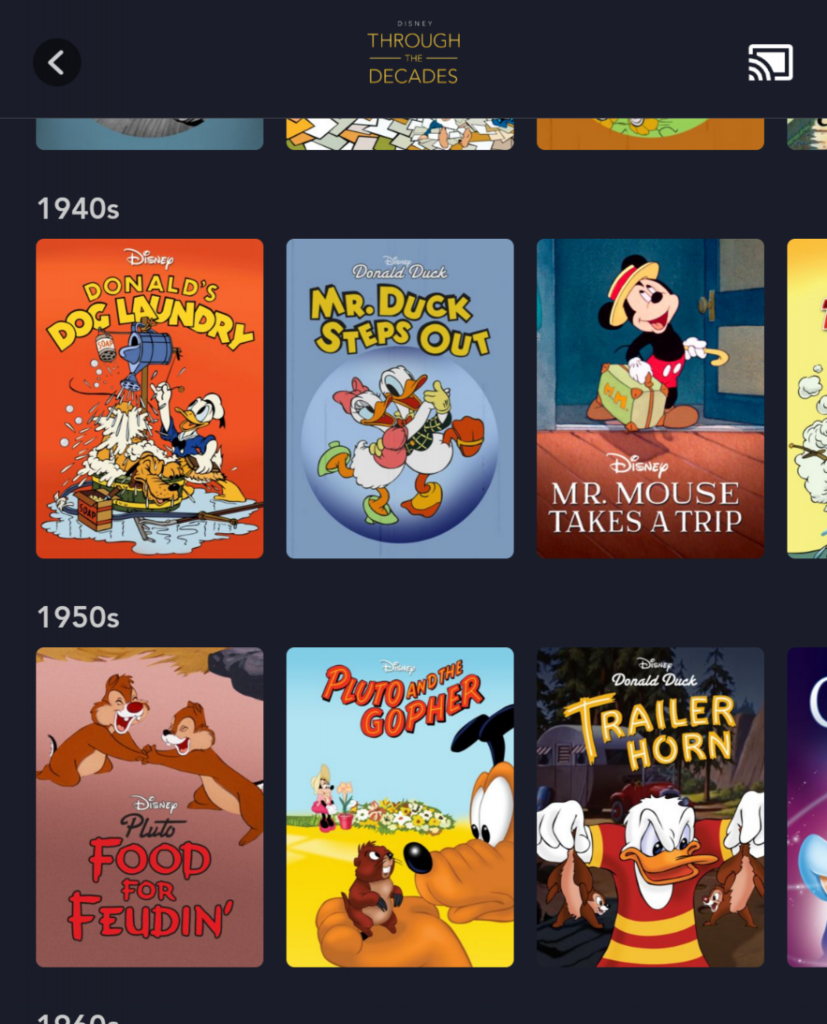
Be First to Comment